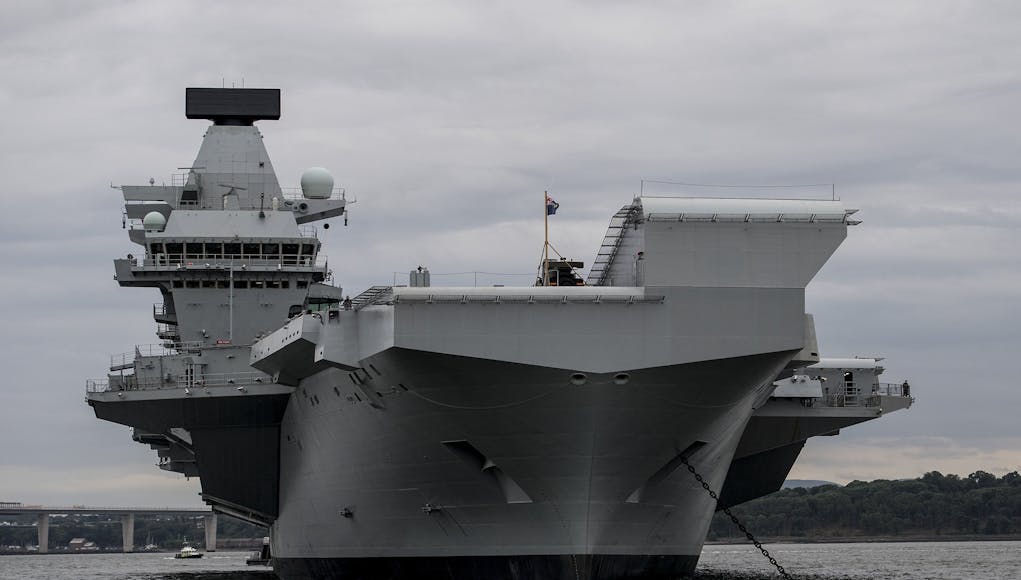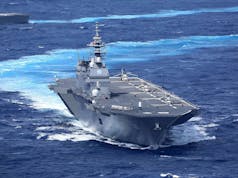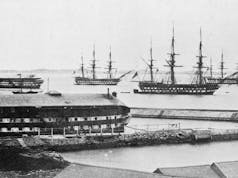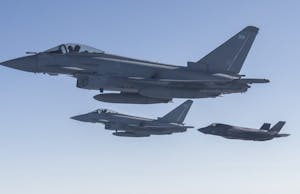Numerous media reports have claimed HMS Queen Elizabeth is vulnerable to cyber attack because she uses Windows XP, that is not the case.
Confusion seems to come from the fact former Defence Secretary Michael Fallon didn’t deny the suggestion the vessels used Windows XP, the only trouble with is, he doesn’t actually seem to know any better.
While many on board systems used by contractors for various tasks use Windows XP, Windows 7 and various other operating systems, none of these are directly involved in running the vessel and will not be present when the ship enters operation service according to the Ministry of Defence. It should be noted that none of these systems that use XP in this manner are vulnerable to outside attack in the same way the NHS and other organisations were hit.

Speculation was rife on this very topic two years ago an image of Windows XP was seen on a technicians laptop during a documentary, let’s dig a little deeper shall we (again)?
Some of the belief that the Queen Elizabeth class use Windows XP could come from the fact that much of the fleet use a specialised version of Microsoft Windows 2000 (“Windows for Warships”) for the fleet.
While some versions of Windows have long been criticised for unreliability, it’s generally not the case with Windows 2000 and it’s successor XP. These operating systems are widely used in commercial operations (including manufacturing plants, labs and commercial ships). The Royal Navy has already installed similar systems in other ships and submarines.
It is understood that the most significant expense in using “Windows for Warships” is writing the software that will connect the networked devices to ship sensors and communications. The navy has found large flat displays excellent ways to view sensor data and information.
The earlier rumours seem to have stemmed from a comedy wallpaper on the laptop owned by an engineer that was visible on a recent documentary while the later rumours again seen to have stemmed from a background on a laptop coupled the Defence Secretary not being particularly knowledgeable on naval operating systems.
“The MoD can confirm that Windows XP will not be used by any onboard system when the ship becomes operational, this also applies to HMS Prince of Wales.”
This would appear to agree with us, that XP is being used to test and calibrate the systems prior to operational service.
So what do the Queen Elizabeth class use?
The new carriers are the first ships to be built with a BAE Systems designed operating system called Shared Infrastructure, which will be rolled out across the rest of the Royal Navy’s surface fleet over the next 10 years. Shared Infrastructure is a state-of-the-art system that will revolutionise the way ships operate by using virtual technologies to host and integrate the sensors, weapons and management systems that complex warships require. Replacing multiple large consoles dedicated to specific tasks with a single hardware solution, reduces the amount of spares required to be carried onboard and will significantly decrease through-life costs.
Developed by engineers at BAE Systems in collaboration with the Ministry of Defence’s Maritime Combat Systems team, Shared Infrastructure is an innovative hardware solution that can host software from multiple technology providers on a single system. This means, for the first time ever, the ship’s crew has the capability to access all software, such as navigation, communications and sonar, needed to operate the ship’s combat systems through a single console. This provides significant savings to the MOD, including a reduction in the space and power needed for computing equipment, makes it simpler for crew to operate, as well as reducing the amount of spares which are required to be carried on board and therefore significantly decreasing through-life costs.
According to BAE last year:
“They [the Queen Elizabeth class] will also be the first ships to be built with a BAE Systems designed, new state-of-the-art operating system called Shared Infrastructure, which will be rolled out across the Royal Navy’s surface fleet over the next ten years. Shared Infrastructure revolutionises the way ships operate by using virtual technologies to host and integrate the sensors, weapons and management systems that complex warships require. By replacing multiple large consoles dedicated to specific tasks with a single hardware solution, the amount of spares which are required to be carried onboard is reduced, significantly decreasing through-life costs.”
Jennifer Osbaldestin, Combat Systems Director at BAE Systems Naval Ships, said:
“Installing the Shared Infrastructure equipment on board HMS OCEAN introduces a more efficient way of housing the ship’s systems. By operating on a single interface, systems can be upgraded as and when required, and capabilities deployed efficiently, ensuring the Royal Navy is best placed to respond to evolving threats. This is a fantastic achievement for the teams involved and there is a real sense of excitement as we move into the next phase of installing the technology on board one of the Royal Navy’s Landing Platform Dock ships, HMS ALBION, next year.”
The deployment of Shared Infrastructure on HMS Ocean marks an important step towards the Ministry of Defence’s vision to establish a common shared architecture across all Royal Navy warships.
Shared Infrastructure is also being deployed on all 13 Type 23 frigates, the Royal Navy’s Offshore Patrol Vessels and the second Landing Platform Dock, system deployment is scheduled to be completed over the next 10 years. The installation of the hardware on the Type 23 frigate fleet will also pave the way for creating a coherent shared infrastructure across current and future warships, including the Type 26 Global Combat Ship.



















Unfortunately, a lie is half way around the world before the truth has got its boots on.
Actually that’s not necessarily a bad thing, about 3000 Russian, Chinese and North Korean hackers just spent the weekend desperately waisting their time.
And that thought amuses me 🙂
Disinformation regardless of its intent is always helpful to Operational security.
And what will happen to our whole fleet after we sell the Shared Infrastructure system on HMS Ocean?
All the IT equipment will be disposed of as per all MOD asset disposals. If its Official or higher and can store data it gets destroyed.
What does Fallon actually know?
Probably a lot more than you do on this subject.
[…] UK Defence Journal también aluden a lo que el Ministerio de Defensa afirma y explican que tanto Windows XP, como […]
[…] UK Defence Journal también aluden a lo que el Ministerio de Defensa afirma y explican que tanto Windows XP, como […]
Liar, the quote is about the OPVs not the QE class
[…] any Microsoft software on board and uses a completely new system called Shared Infrastructure. UK Defence Journal has investigated this matter in […]
In one video shows the CP wallpaper.
xp
[…] technology which is difficult to infiltrate. However, it should be understood that, as the Ministry of Defence highlighted, it is common practice for newly commissioned, and especially prototype, warships to utilize […]